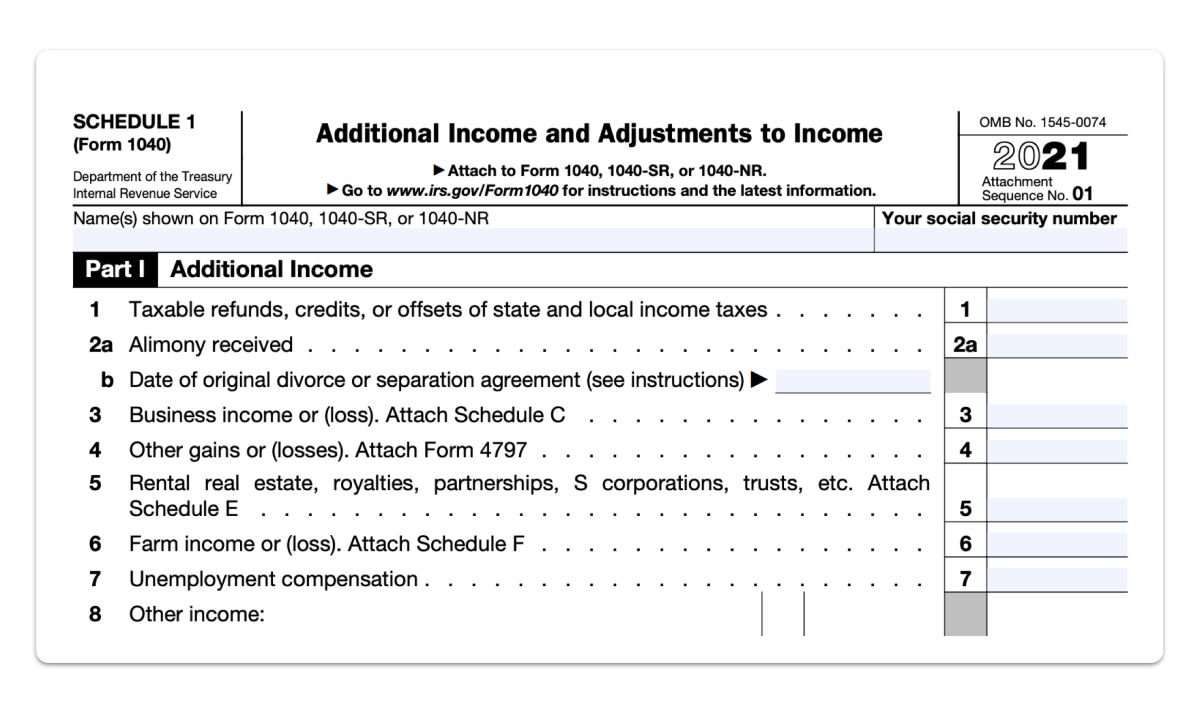

Finance
What Is AOCI In Accounting
Published: October 12, 2023
Discover the significance of AOCI in accounting and how it impacts finance. Gain a comprehensive understanding of this crucial financial term.
(Many of the links in this article redirect to a specific reviewed product. Your purchase of these products through affiliate links helps to generate commission for LiveWell, at no extra cost. Learn more)
Table of Contents
Introduction
When it comes to the world of accounting, there are numerous terms and concepts that can be quite confusing. One such term is AOCI, which stands for Accumulated Other Comprehensive Income. AOCI is an important component of financial reporting that captures the changes in value of certain assets or liabilities that are not recorded in the traditional income statement.
AOCI is a method used by companies to report gains or losses that are not directly related to their core business operations. These gains or losses often arise from items such as changes in the market value of available-for-sale securities, foreign currency translation adjustments, or gains or losses from pension plans. As a result, AOCI provides a way for companies to account for these fluctuations in value that may impact their overall financial position, without directly impacting their day-to-day operations.
In this article, we will explore the definition of AOCI, how it is used in accounting, its impact on financial statements, and the reporting and disclosure requirements associated with it. We will also discuss some examples of AOCI and compare it to other accounting components. Additionally, we will address the limitations and criticisms of AOCI accounting.
By gaining a clear understanding of AOCI and its role in accounting, you will be better equipped to navigate the complexities of financial reporting and make more informed decisions as an investor, business owner, or finance professional.
Definition of AOCI
Accumulated Other Comprehensive Income (AOCI) is a financial reporting measure that captures the changes in value of certain assets or liabilities that are not included in the traditional income statement. It is part of comprehensive income, which represents the total change in equity during a period from non-owner sources. AOCI includes gains or losses that result from transactions or events that are distinct from a company’s core business operations.
Specifically, AOCI captures gains or losses that arise from items such as:
- Unrealized gains or losses on available-for-sale securities
- Foreign currency translation adjustments
- Actuarial gains or losses from pension plans and other post-employment benefit plans
- Gains or losses on cash flow hedges
- Gains or losses on certain derivative instruments
The purpose of AOCI is to provide a way for companies to account for these fluctuations in value that may impact their financial position, without impacting their core operating performance. It allows companies to separate and disclose these items separately from the net income on the income statement. This helps investors and stakeholders gain a clearer picture of a company’s overall financial health and its exposure to various risks.
It is important to note that AOCI represents the cumulative amount of gains or losses, and it is presented as a separate line item in the equity section of a company’s balance sheet. AOCI can have a significant impact on a company’s total equity and can fluctuate over time as the underlying assets or liabilities change in value.
Overall, AOCI serves as a useful tool for companies to provide more transparent and comprehensive financial reporting.
How AOCI is Used in Accounting
AOCI plays an important role in accounting as it helps companies accurately report and disclose certain gains or losses that are not recognized in the traditional income statement. Here are some key ways in which AOCI is used in accounting:
- Separate Reporting: AOCI allows companies to separate and report certain items that do not directly impact their core operating performance. This separation helps investors and stakeholders understand the components of a company’s comprehensive income and assess its financial position more accurately.
- Disclosure of Hidden Risks: AOCI provides a means for companies to disclose the risks associated with certain items, such as changes in the market value of available-for-sale securities or foreign currency translation adjustments. By disclosing these risks separately, companies can enhance transparency and help investors make more informed decisions.
- Long-Term Financial Planning: AOCI helps companies evaluate their long-term financial planning by accounting for gains or losses that may have a significant impact on their overall financial position. This information enables companies to assess their exposure to various risks and make strategic decisions to mitigate those risks.
- Regulatory Compliance: AOCI is an essential component of financial reporting and is subject to regulatory requirements. Companies must adhere to these requirements to maintain compliance with accounting standards and ensure accurate and transparent financial reporting.
- Comparison and Analysis: AOCI allows for the comparison and analysis of comprehensive income across different time periods or among different companies. By examining the changes in AOCI over time, investors and analysts can assess the effectiveness of a company’s risk management strategies and evaluate its long-term performance.
It is important for companies to carefully analyze and review the components of AOCI to ensure accurate financial reporting. This involves assessing the underlying assets or liabilities and understanding the factors that contribute to the changes in value. By properly utilizing AOCI, companies can provide a more complete and transparent view of their financial performance and position to stakeholders and investors.
Examples of AOCI
To better understand how Accumulated Other Comprehensive Income (AOCI) works in practice, let’s explore a few examples of items that contribute to AOCI:
- Unrealized Gains or Losses on Available-for-Sale Securities: When a company holds investments in securities that are classified as available-for-sale, any unrealized gains or losses resulting from changes in the market value of those securities are recorded in AOCI. It means that these gains or losses are not recognized on the income statement until the securities are sold.
- Foreign Currency Translation Adjustments: Companies that operate internationally may have subsidiaries in different countries, resulting in transactions denominated in different currencies. Fluctuations in exchange rates can cause gains or losses when converting foreign currency financial statements into the reporting currency. These gains or losses are reported in AOCI.
- Actuarial Gains or Losses on Pension Plans: Companies that offer pension plans often experience changes in the actuarial assumptions used to calculate the plan’s obligations. These changes can lead to gains or losses, which are recognized in AOCI. The gains or losses will subsequently be recognized in the income statement over time.
- Gains or Losses on Cash Flow Hedges: Companies may enter into derivative financial instruments, such as futures contracts or options, to manage the risk associated with changes in interest rates or commodity prices. Any gains or losses from these cash flow hedges that are not immediately recognized in the income statement are recorded in AOCI.
- Gains or Losses on certain Derivative Instruments: Derivative instruments, such as foreign currency forward contracts or interest rate swaps, can also be classified as non-designated hedges or held-for-trading. Any gains or losses from these instruments that are not reported in the income statement are included in AOCI.
These examples demonstrate how various factors can contribute to AOCI and impact a company’s financial position. It is important to note that the specific items recorded in AOCI may vary based on the company’s industry, business nature, and accounting policies.
Understanding the examples of AOCI helps investors, analysts, and other stakeholders gain insights into a company’s exposure to certain risks and better assess its financial performance. It also highlights the importance of reviewing AOCI to get a comprehensive view of a company’s financial position beyond the traditional income statement.
AOCI vs. Other Accounting Components
Accumulated Other Comprehensive Income (AOCI) is just one component of comprehensive income and differs from other accounting components in terms of its nature, presentation, and impact on financial statements. Let’s compare AOCI to other accounting components to understand their distinctions:
- Net Income: Net income represents the total revenue minus expenses during a specific period and is the primary measure of a company’s profitability. Unlike AOCI, net income includes gains or losses that directly impact the company’s core business operations and is reported on the income statement. It measures the performance of a company’s day-to-day operations.
- Retained Earnings: Retained earnings represent the cumulative net income of a company that has been retained and reinvested into the business rather than distributed as dividends. Retained earnings account for all past income after deducting dividends and any prior period adjustments. Retained earnings do not capture the unrealized gains or losses included in AOCI.
- Common Equity: Common equity is the residual interest in the assets of a company after deducting liabilities. It includes common stock, additional paid-in capital, retained earnings, and other equity components. AOCI is a component of common equity and reflects the cumulative changes in value of certain assets or liabilities that are not recognized in the income statement.
- Comprehensive Income: Comprehensive income is the total change in equity during a period from non-owner sources. It includes net income and other comprehensive income items like AOCI. While net income focuses on the operating performance of a company, comprehensive income provides a more holistic view by incorporating the impact of other items that affect equity, such as AOCI.
Compared to other accounting components, AOCI captures gains or losses that are not related to a company’s core business operations. It represents changes in the value of certain assets or liabilities that are not recognized on the income statement. AOCI provides a means to report these fluctuations separately, enhancing transparency and providing a clearer picture of a company’s financial position.
It’s worth noting that the components discussed above are interconnected, and changes in one component, such as AOCI, can impact others. For instance, gains or losses from AOCI can flow into retained earnings and subsequently affect common equity. Understanding the relationships between these accounting components is crucial for comprehensive financial analysis and decision-making.
AOCI’s Impact on Financial Statements
Accumulated Other Comprehensive Income (AOCI) has a significant impact on a company’s financial statements. It affects the balance sheet, income statement, and equity section, providing valuable insights into a company’s comprehensive income and overall financial position. Let’s explore the impact of AOCI on financial statements:
- Balance Sheet: AOCI is reported as a separate line item within the equity section of the balance sheet. It represents the cumulative amount of gains or losses from various items, such as unrealized gains or losses on available-for-sale securities, foreign currency translation adjustments, or actuarial gains or losses on pension plans. AOCI can significantly impact the total equity of a company and provide a more comprehensive view of its financial health.
- Income Statement: The gains or losses included in AOCI are not immediately recognized in the income statement. Instead, they are reported as part of comprehensive income and may be recognized in future periods as the underlying assets or liabilities are realized or settled. This approach allows for the separation of items that are not directly tied to a company’s core business operations and provides a clearer picture of its operating performance.
- Equity Section: AOCI is a component of the equity section of the balance sheet. As gains or losses flow into AOCI, it affects the overall equity of the company. For example, if a company experiences significant gains on available-for-sale securities, those gains will increase AOCI and, subsequently, the total equity. On the other hand, losses may decrease AOCI and equity.
AOCI’s impact on financial statements is crucial for investors, analysts, and stakeholders in assessing a company’s financial position and performance. It helps to distinguish between gains or losses that directly impact a company’s operating performance versus those associated with other comprehensive income items. By understanding the impact of AOCI on financial statements, stakeholders can gain a more accurate understanding of a company’s comprehensive income and make more informed decisions.
It is important to note that AOCI is subject to specific reporting and disclosure requirements, which are designed to ensure transparency and consistency in financial reporting. Companies must diligently follow these requirements to provide reliable and meaningful information to investors and stakeholders.
Reporting and Disclosure Requirements for AOCI
Accumulated Other Comprehensive Income (AOCI) is subject to specific reporting and disclosure requirements that companies must follow to ensure accurate and transparent financial reporting. These requirements help provide stakeholders with a clear understanding of a company’s comprehensive income and the underlying items that contribute to AOCI. Let’s explore the reporting and disclosure requirements for AOCI:
- Separate Presentation: AOCI must be presented as a separate line item within the equity section of the balance sheet. This separation allows stakeholders to distinguish between gains or losses that impact a company’s core operating performance and those associated with other comprehensive income items.
- Disclosure of Components: Companies are required to disclose the individual components of AOCI and provide a breakdown of the gains or losses associated with each item. This disclosure helps stakeholders understand the specific factors that contribute to changes in AOCI and the potential impact on the company’s financial position.
- Accumulation and Reversals: Companies must disclose any accumulated gains or losses within AOCI and any subsequent reversals that may occur. This information enables stakeholders to track the cumulative changes in AOCI over time and evaluate the impact on a company’s equity.
- Reclassification Adjustments: If any gains or losses within AOCI are subsequently recognized in the income statement, companies must disclose reclassification adjustments. These adjustments provide transparency regarding the flow of gains or losses from AOCI to the income statement and help stakeholders understand the impact on reported net income.
- Disclosure of Tax Effects: Companies must disclose the tax effects associated with items reported in AOCI. This helps stakeholders understand the impact of tax regulations on the overall financial position and the potential future tax implications when gains or losses are realized.
Compliance with these reporting and disclosure requirements ensures that companies provide reliable and meaningful information about AOCI to investors, analysts, and other stakeholders. It promotes transparency and consistency in financial reporting, allowing stakeholders to make informed decisions and accurately assess a company’s financial position and performance.
It’s worth noting that reporting and disclosure requirements for AOCI may vary based on the applicable accounting standards, such as Generally Accepted Accounting Principles (GAAP) or International Financial Reporting Standards (IFRS). Companies should adhere to the specific requirements applicable to their jurisdiction and industry to maintain compliance and transparency.
Limitations and Criticisms of AOCI Accounting
While Accumulated Other Comprehensive Income (AOCI) has its benefits in financial reporting, it is not without its limitations and criticisms. It’s important to understand these limitations in order to interpret AOCI effectively. Here are some of the common limitations and criticisms of AOCI accounting:
- Volatility: AOCI is often criticized for introducing volatility into financial statements. Since AOCI captures gains or losses that are not recognized in the income statement, the value of AOCI can fluctuate significantly due to changes in market conditions or other non-operational factors. This volatility can distort the assessment of a company’s stability and hinder comparability with other companies.
- Complexity: The accounting principles and rules related to AOCI can be complex and challenging to understand for individuals without a deep accounting background. The various items that contribute to AOCI, such as unrealized gains or losses on available-for-sale securities or foreign currency translation adjustments, require careful analysis and specialized knowledge to grasp their implications fully.
- Subjectivity: AOCI accounting involves some degree of subjectivity in determining the fair value of certain assets or liabilities and projecting future cash flows. For example, estimating the fair value of available-for-sale securities or making actuarial assumptions for pension plans can require judgment calls, which can introduce potential bias or inaccuracy into the AOCI calculations.
- Timing of Recognition: Critics argue that AOCI accounting can delay the recognition of losses. Since some gains or losses are not immediately recognized in the income statement, they may remain in AOCI even during periods of significant market volatility. This delay in recognizing losses can hinder the accuracy of financial reporting and may impact investor decision-making.
- Limited Disclosure: While companies are required to disclose the components of AOCI, the level of detail provided in these disclosures can vary. Critics argue that the limited disclosure may not provide stakeholders with sufficient information to evaluate the underlying risks and assess the potential impact of AOCI on a company’s future financial performance.
It is important to recognize these limitations and criticisms when interpreting AOCI accounting. Stakeholders should consider these factors alongside other financial metrics and indicators to gain a comprehensive understanding of a company’s financial position and performance.
Despite these limitations, AOCI remains an integral part of financial reporting, providing a means to capture gains or losses that are not recognized in the income statement. Companies and their stakeholders need to be attentive to the complexities and potential bias that can arise from AOCI accounting, while also appreciating its value in reflecting comprehensive income and disclosing certain important financial information.
Conclusion
Accumulated Other Comprehensive Income (AOCI) is a valuable component of financial reporting that helps companies account for gains or losses that are not recognized in the traditional income statement. It allows for the separate reporting and disclosure of items that may impact a company’s financial position but are unrelated to its core business operations.
Throughout this article, we have explored the definition of AOCI, its use in accounting, and its impact on financial statements. We discussed examples of items that contribute to AOCI, compared it to other accounting components, and delved into the reporting and disclosure requirements associated with AOCI. We also addressed the limitations and criticisms of AOCI accounting.
It is important to recognize that AOCI has its limitations and complexities, including potential volatility, subjectivity in measurement, and potential delays in recognizing losses. However, when used appropriately and understood in the context of other financial metrics, AOCI provides valuable insights into a company’s comprehensive income and its exposure to various risks.
By adhering to the reporting and disclosure requirements, companies can provide transparency and accuracy in their financial reporting, enabling stakeholders to make well-informed decisions. Investors, analysts, and other stakeholders should interpret AOCI alongside other financial information to gain a comprehensive understanding of a company’s financial position and performance.
In conclusion, AOCI serves as a mechanism for companies to report and disclose certain gains or losses that may impact their financial position but are not directly tied to their core business operations. Understanding AOCI and its role in financial reporting is essential for making informed decisions and evaluating a company’s overall financial health.














